Oleg Antonov
Oleg Konstantinovich Antonov was born on the 7th of February 1906 in the village of Troitsa, near Moscow. By 1924, Oleg was designing and building his own gliders and a year later, started studying at the Leningrad Polytechnic Institute, graduating in 1930. Three years later, he was appointed to the role of Chief Designer at a glider factory in Moscow, and by the time he left, had designed over 40 types of powered and unpowered gliders.
In 1938, Oleg was appointed to the role of leading design engineer at the A.S. Yakovlev Design Bureau (Plant No. 115). During the war, he moved roles several times within the Yakovlev organisation, designing the -38 Aist and even the KT Tank Glider, and playing a leading role in the design of the Yak-3 fighter.

After the end of WWII, Oleg went on to form his design bureau in Novosibirsk and, in 1948, designed and built the famous AN-2 at the Kyiv Aviation Plant.
The design bureau moved to Kyiv in 1952, establishing a full design, test and build facility. During the fifties, Oleg and his team designed and built numerous civilian and military designs, including those in this post, the giant AN-22, AN-124 and AN-225.
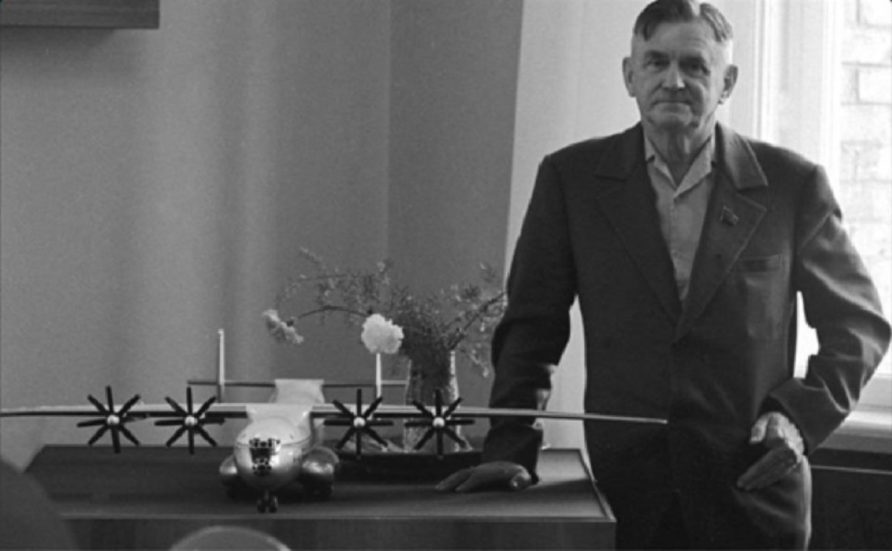
Oleg died on the 4th of April 1984.
AN-22 (Antei/Cock)
Although the AN-8 and AN-12 were considerable aircraft, it was the AN-22 that really made a big leap forward, breaking numerous records as it went. The requirement was defined in 1960 and designated the Model 100.
It first flew in 1965 and went into production in 1966, with a final run of 68 aircraft completed in 1976. The four Kuznetsov NK-12MA turboprop engines each drove a contra-rotating rotor with a total power output of 60,000 SHP, compare with the A400M, which has a total of 44,000 SHP.
This power, from the same engines that power the TU-95 Bear, provided a payload of 72 tonnes to a maximum range at a maximum payload of 5,000 km, although a record-breaking flight in 1967 lifted 104 tonnes. It also set several speed records.
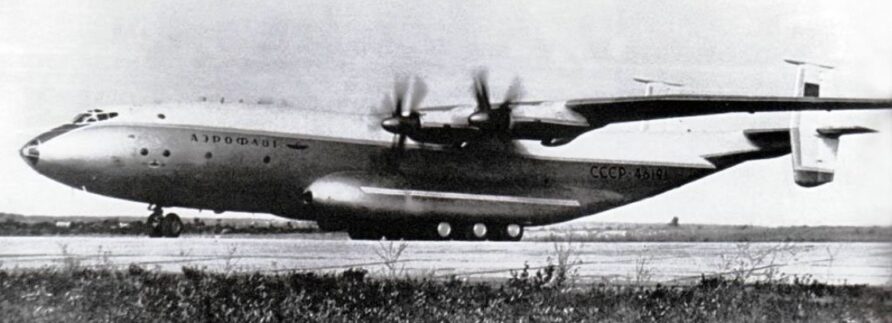
The 14-wheel undercarriage and large double-slatted flaps provided good short-field performance, 1,400m fully loaded. Four gantry cranes and two winches supported cargo handling.
Cargo hold dimensions are 33m in length, 4.4m wide, and 4.4m high.
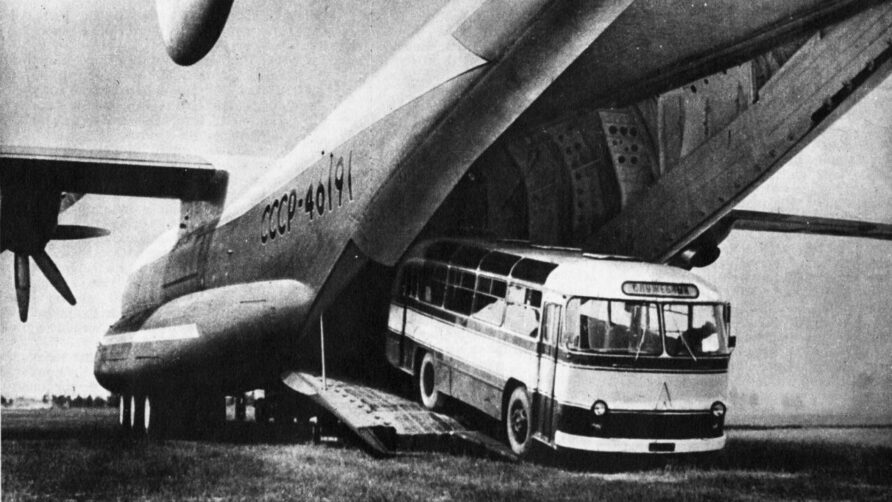
Approximately 75 were built in several variants, and it is still in service.
Learn more at Antonov
https://www.antonov.com/en/history/an-22
AN-124 (Condor)
As impressive as the AN-22 was, it still wasn’t big enough.
In October 1967, Oleg Konstantinovich Antonov proposed Project 122 (AN-122) but this was rejected as it fell short of the 120-140 tonne requirement.
By 1971, Antonov had initial designs for four and six jets turbine-powered transport and in 1972, the decision was made to proceed with Project 124. A full-size mock was in 1973 and by 1982, the prototype was ready for its first flight.
In 1986, it entered production with 56 being completed. As was the norm, it proceeded to make and break records including lifting 171.2 tonnes to 10,750m and a 25-hour non-stop flight.
Many variants have been produced.
Even the older AN-124-100 Ruslan is a hugely impressive aircraft; with a 120 tonnes payload and 4,800 km range for starters.
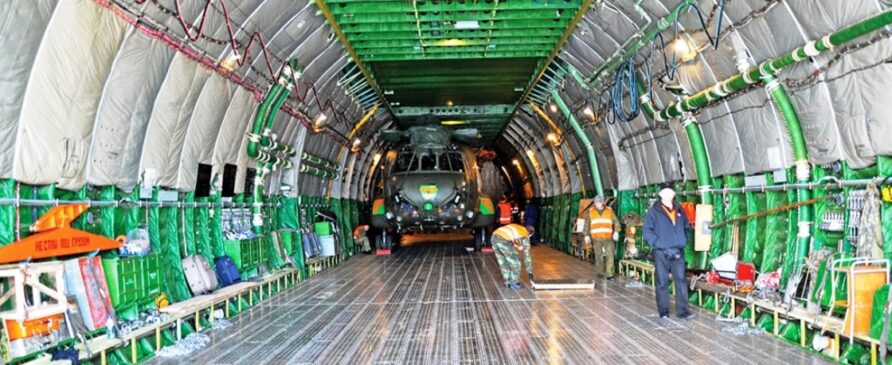
The latest AN-124-150 (Ruslan) can carry a 150-tonne payload in its 36.5m long, 6.4m wide, and 4.4m high cargo hold, which can be loaded from the front or rear. In addition to cargo, it can also carry 88 passengers in an upper deck compartment.
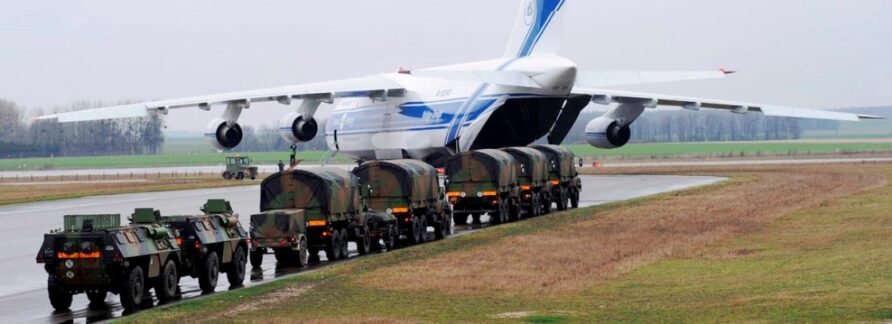
A number of winches and cranes allow cargo to be loaded and unloaded and the twenty-four-wheeled undercarriage can be height adjusted.
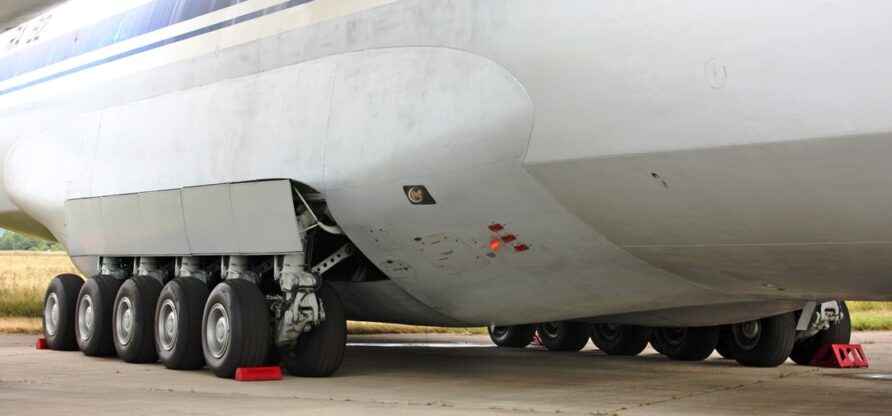
The list of improvements in the AN124-100M-150 includes (from the Antonov website)
- payload increased from 120 tonnes to 150 tonnes;
- take-off weight increased from 392 tonnes to 402 tonnes;
- flight range increased, including for cargo of 120 tonnes, from 4650 km to 5400 km;
- aircraft assigned service life is increased to 24,000 flight hours; works on its extension up to 50 000 flight hours/10 000 flights/45 years service life are being performed;
- the new PO-500 schedule of maintenance has been introduced (maintenance every 500 flight hours);
- onboard crane equipment providing loading-unloading operations of a single piece of cargo up to 40 tonnes of weight;
- fuselage structure had been strengthened to enable airlift of a single piece of cargo up to 150 tons weight;
- Navigation System and radar have been updated;
- a digital anti-skid braking system allowing to reduce landing distance by up to 30% has been installed;
- crew reduced from 6 to 4 members, and the comfort level of the crew rest cabin has been improved;
- military oxygen equipment has been exchanged for civil one;
- reinforced wheels and tires have been installed;
- new devices for engine control have been installed;
- modernised systems of reverse control and engine vibration state monitoring have been developed;
- the SRPPZ-2000 ground proximity warning system was installed;
- A826 inertial navigation system upgraded;
- Enhanced observation (EHS) has been applied;
- Minimum Equipment List has been developed and is now being implemented
This extends an already impressive aircraft with a range of improvements.
Learn more at Antonov
https://www.antonov.com/en/history/an-124-ruslan
Antonov has also been trying to develop the next-generation Ruslan for a while. There have also been concepts to create a version with a taller cargo bay for industrial loads and a Chinook helicopter without disassembly. A fully Westernised version now that Ukraine -Russian relations are unlikely to produce any more cooperation anytime soon.
Russia has also reportedly begun early-stage development work on a replacement.

AN-225 (Myria)
To finish, the six-engine AN-225.
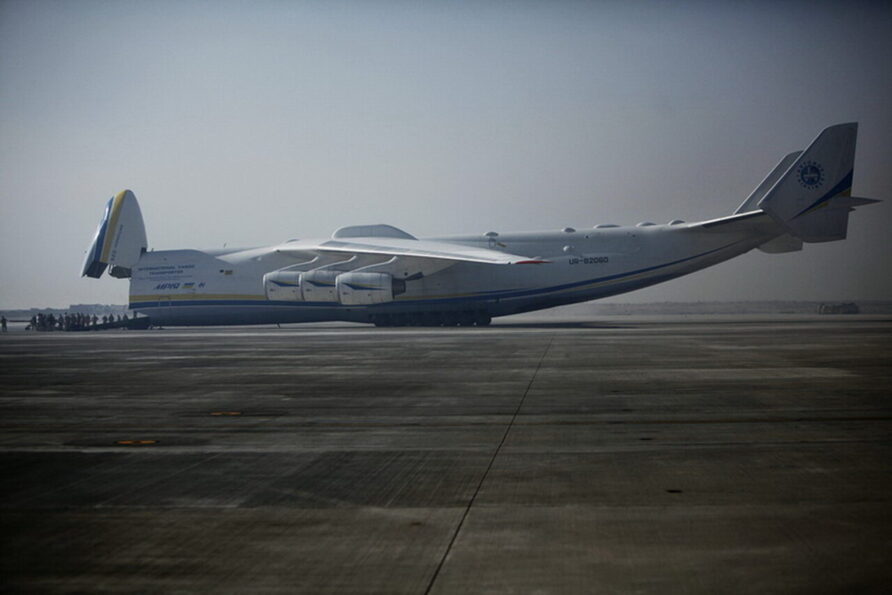
The AN-225 (Myria) was designed to transport cargo weighing up to 250 tonnes, but not on short runways.
It can also carry 200-tonne cargo on its external store arrangement, the Russian Buran space vehicle, for example.
Only one was made, and it is in civilian service as a super heavy airlifter. The cargo hold has a length of 43m, a width of 6.4 m, and a height of 4.4 m. Quite simply, a wonderful piece of aeronautical engineering.
The image below shows an AN-225 at Bastion
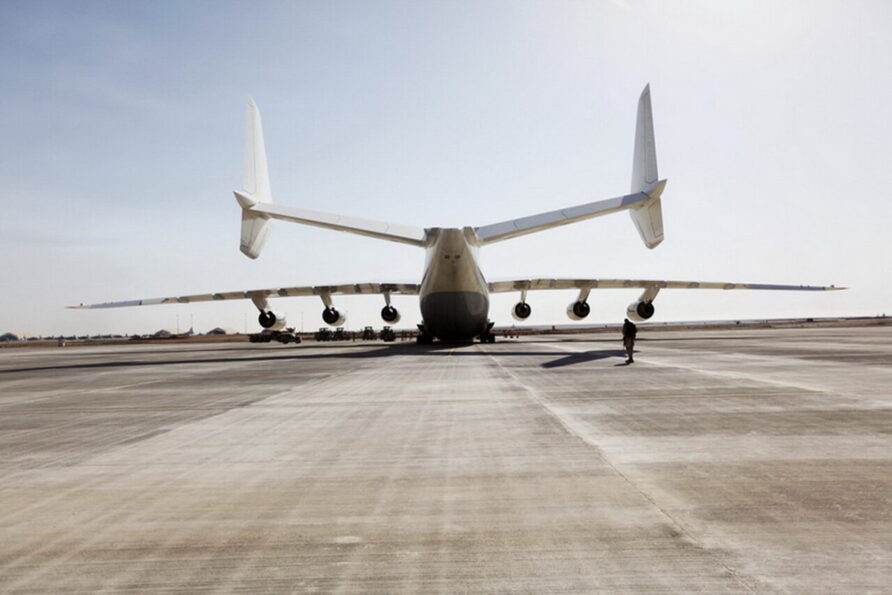
Read more at Antonov
https://www.antonov.com/en/history/an-225-mriya
In June 2016, Ukroboronprom consolidated its holdings into a new company called the Ukrainian Aircraft Corp. The new organisation is very much centred on Antonov. Its general objectives are improving efficiency, export sales, and, of course, untangling itself from any Russian subcontractors.
The Government of Ukraine took decision on liquidation of the Antonov State CONCERN. The CONCERN consisted of three enterprises: Antonov State COMPANY, Kharkiv State Aircraft Manufacturing Company (KSAMC), and State Enterprise Plant 410 of Civil Aviation. In 2015, aiming to increase the efficiency of the aircraft industry, the Government of Ukraine took the decision to pass Antonov State COMPANY, KSAMC, and State Enterprise Plant 410 of Civil Aviation (i.e., all three enterprises of Antonov CONCERN) under the management of UKROBORONPROM State Concern
In August, Antonov also announced a strategic partnership with AICC of China
On August 30, 2016, ANTONOV Company included into Ukroboronprom SC and Aerospace Industry Corporation of China (AICC) signed Cooperation agreement on the AN-225 programme. In such a way, the parties expressed their intentions for long-term cooperation. The first stage of this interaction consists of the construction of the second modernized AN-225 Mriya at ANTONOV Company and delivery of this aircraft to AICC. The second stage – organization of the joint series production of the AN-225 in China under license of ANTONOV Company. Both stages will be realized in accordance with proper contracts
The 250-tonne payload aircraft, it seems, may have a second life, although little has been heard of since on this ambitious project.
More recently, the sole AN-225 has returned to flight operations after a nearly 10-month maintenance period
UPDATE [May 2022]
and
Sláva Ukrayíni
Before reading on, would you mind if I brought this to your attention?
Think Defence is a hobby, a serious hobby, but a hobby nonetheless.
I want to avoid charging for content, but hosting fees, software subscriptions and other services add up, so to help me keep the show on the road, I ask that you support the site in any way you can. It is hugely appreciated.
Advertising
You might see Google adverts depending on where you are on the site, please click one if it interests you. I know they can be annoying, but they are the one thing that returns the most.
Make a Donation
Donations can be made at a third-party site called Ko_fi.

Think Defence Merch
Everything from a Brimstone sticker to a Bailey Bridge duvet cover, pop over to the Think Defence Merchandise Store at Red Bubble.
Some might be marked as ‘mature content’ because it is a firearm!
Affiliate Links
Amazon and the occasional product link might appear in the content, you know the drill, I get a small cut if you go on to make a purchase
Operators
Antonov Airlines operates a single AN-22 and the world’s only AN-225, in addition to seven AN-124’s
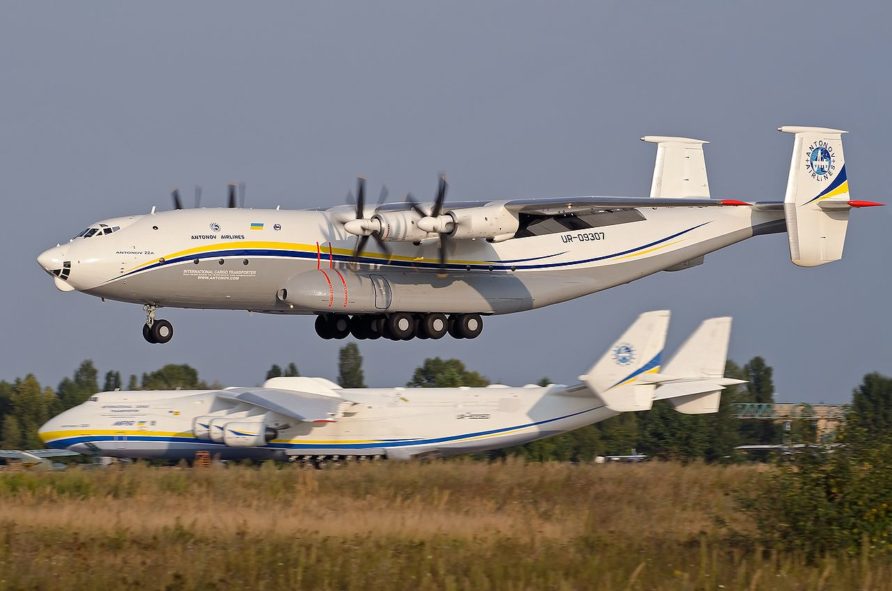
Maximus Air also operates a single AN-124 from the United Arab Emirates
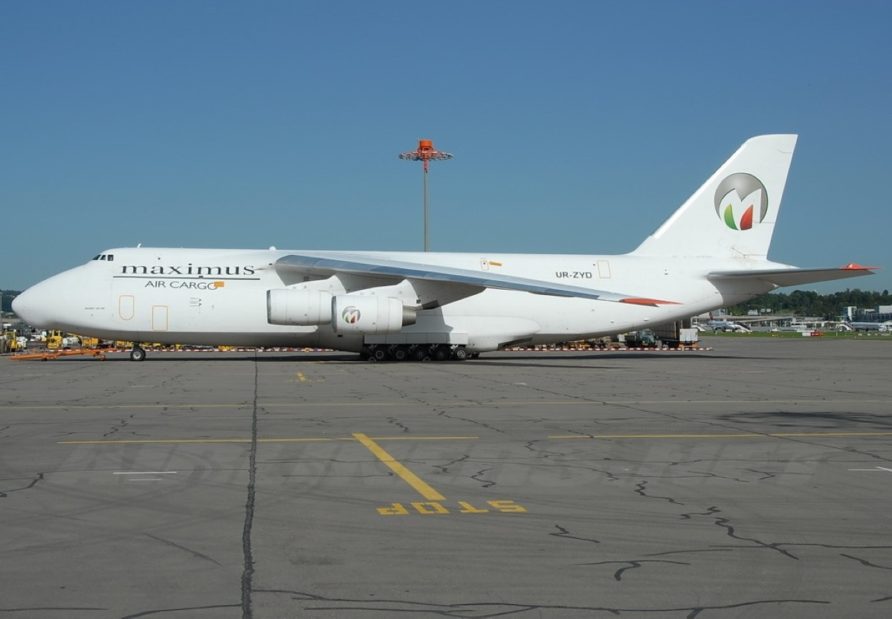
Volger Dnepr operates twelve AN-124’s
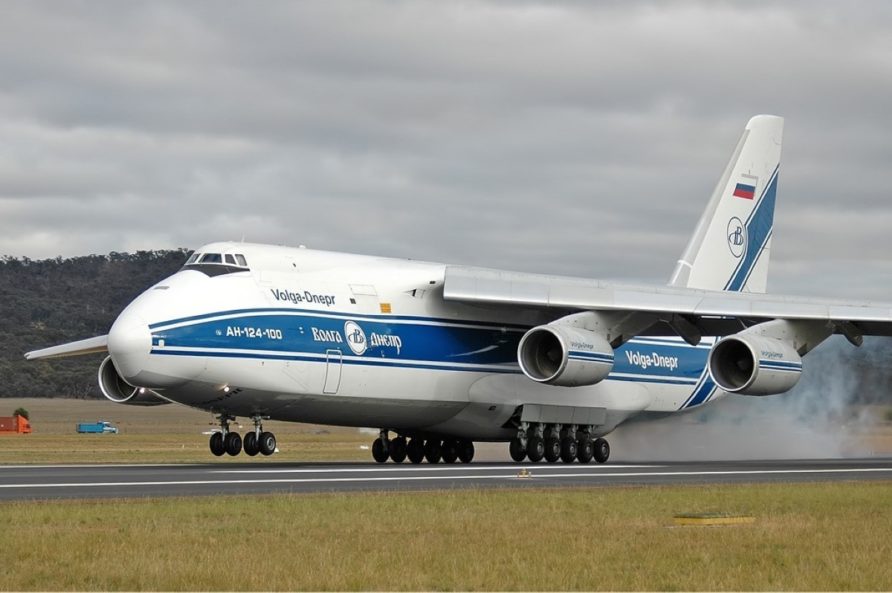
The Strategic Airlift Interim Service (SALIS) is a commercial arrangement for the assured delivery of strategic heavy lift for participating NATO nations. The permanent staff of the SALCC is located in the building of the MCCE at Royal Netherlands Air Force Base, Eindhoven (The Netherlands).
The SALIS-Contract basically consists of two fundamental elements. Firstly, assured access to strategic airlift capability for outsized cargo. Secondly, the ownership and usage of Participants agreed on a quota of flying hours per annum. The assured access guarantees the assured availability of two (2) AN124-100 under part-time charter for any of the Participant’s national purpose, and the assured availability of up to six (6) AN124-100 aircraft on priority call for the rapid deployment of forces in support of NATO/EU operations. The SALIS Steering Board is the highest directing body for all SALIS matters.
In January 2019, the SALIS contract was extended for a further three years, providing two AN-124-100’s on a constant basis, with the previous contracts being consolidated into one.
The purpose of the strategic airlift capability is to deploy equipment for rapid deployment in support of NATO and/or EU-operations. This MOU led to a signed SALIS-Contract between NAMSA (23rd of January 2006), acting on behalf of the participating nations, and RUSLAN SALIS GmbH, the Aircraft Operator (AO) based at Leipzig Airport (supported by the AO’s Volga Dnepr Airlines and Antonov Design Bureau). With the beginning of 2017 two different contracts were in place instead of one, with RUSLAN SALIS GmbH (AO Volga Dnepr Airlines) and ANTONOV SALIS GmbH (AO Antonov Design Bureau). Starting in 2019 there is only one contract with ANTONOV LOGISTICS SALIS GmbH (AO Antonov Airlines), which provides the Member Nations the same service
To finish, this article from NATO describes how SALIS and the giant Antonov’s helped with the COVID-19 response
https://www.nspa.nato.int/news/2020/SALIS-Key-capability-covid-19
Read more (Amazon affiliate link)





I suppose that tracking such for-charter aircraft order books (also for Il-76s) is useful for early warning of a strategic surprise attack. Many of these aircraft are usually outside of Russia. Some are based in Leipzig, Germany, for example.
Russian war planners would want to have many such aircraft under Russian control in case of a surprise attack. You’d need those to move VDV better and to deal with Iceland.
Point taken, but Putin is no Roosevelt (who sent a pre-emptive bde of Marines, before the Brits then sent some garrison to let the Marines do some real ‘biz’).
… however, talking about Svalbard?